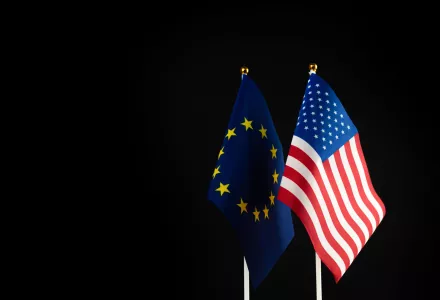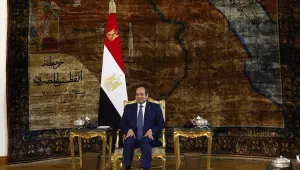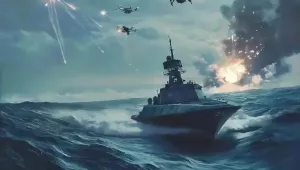Foreword
“The Parties agree that an armed attack against one or more of them in Europe or North America shall be considered an attack against them all.” So committed the United States, Canada, and ten European states in Article V of the North Atlantic Treaty, signed in Washington on April 4, 1949. Less than four years after the end of World War II, against the backdrop of growing Soviet threats to Europe, the treaty bound its signatories in collective defense. The United States, in its first peacetime alliance outside the Western Hemisphere, committed firmly to the security of Europe.
And so it has remained—through the Cold War and the collapse of the Soviet Union, as the North Atlantic Treaty Organization grew to 32 members, under presidents from Harry Truman to Donald Trump.
Today, President Trump is beginning his second term. The geopolitical landscape—in Europe and beyond—is more perilous than it has been at any time since the Cold War. Russia’s aggression in Ukraine has brought the largest war to Europe since 1945. Russia’s actions, along with Chinese assertiveness, questions around American leadership, instability in the Middle East, surging migration, climate change, political discontent throughout the West, and much else besides, have weakened the international order, perhaps fatally.
The transatlantic Alliance is hardly exempt from this tumult. President Trump has intensified long-running, bipartisan concerns in Washington that Europe remains too dependent on U.S. military capabilities and unable to ensure its own security. Many European leaders agree—and have increased their defense spending in recent years. Yet factors such as lagging economic growth and competitiveness, cultural and political differences, and the challenge of coordinating policy across the continent pose formidable obstacles to greater European strength. Meanwhile, European security is no longer the first preoccupation of Washington policymakers. For many, the Indo-Pacific, not the transatlantic, must now be the central concern.
Since 1973, the Belfer Center for Science and International Affairs, a research organization based at Harvard Kennedy School, has advanced scholarship on the most vital policy questions of the day. In this tradition, the Belfer Center last fall convened a task force of distinguished leaders from Europe and the United States to advance an urgent agenda for transatlantic security.
We undertook this effort before the result of the 2024 U.S. election was known. We understood, however, that a consequential moment was upon us either way. A new leader would be in the Oval Office. And new leaders would sit in many national capitals and at NATO and the European Union. Continued broad support for the traditional pillars of Western foreign policy—and for the transatlantic alliance itself—was, and is, not at all assured.
The task force, ably led by Ivo Daalder, Camille Grand, and Daniela Schwarzer, has produced a call for action and a set of ideas that meet the moment. Its fourteen members, drawing on high-level experience in countries from the United States and the United Kingdom to Poland and North Macedonia, argue for a rebalanced transatlantic partnership with a robust European pillar. This, they argue, requires Europeans to boost their capabilities and shoulder more responsibility for defending their own continent. But this report is not a familiar call to build autonomous European defense capacity. It is, by contrast, an argument and a plan for a joint effort in which a greater European commitment to the continent’s defense is supported by continued American investment to realize a robust and more balanced transatlantic security partnership.
As the task force writes, effectuating this new transatlantic bargain will require sustained effort. There is no quick fix. The alternatives, however, are far worse. An alliance that remains overly dependent on Washington faces the risk of rupture. A Europe that remains without adequate defense could dwindle into irrelevance, or suffer military defeat—dealing a blow to security and prosperity on both sides of the Atlantic. The task force illuminates urgent steps to avoid such fates.
The task force also offers clear-eyed analysis of critical strategic issues. These include the outcome of the war in Ukraine and the need for European support to that country; the imperative for alignment, rather than competition, among transatlantic institutions and arrangements; the future shape of transatlantic nuclear deterrence; the management of European and transatlantic defense industrial bases and platforms; and requirements for military enablers and mobility.
The result is an invaluable guide for policymakers, business leaders, and citizens alike. The document is all the more compelling as the consensus of a wide-ranging, senior group.
The Belfer Center is also publishing a companion report by Richard Hooker. That volume, which is not a product of the task force, complements the task force report by offering detailed analysis of European military capabilities and concerns in the transatlantic relationship, from troop readiness and interoperability to European strategy and the U.S. role. It, too, constitutes an important contribution to timely policy debates. In his work, Rich also provided significant inputs to the Task Force itself.
The Belfer Center is proud to have supported these efforts. They fulfill the Center’s tradition of rigorous scholarship on the most vexing challenges of science and international affairs. Born amid the nuclear dangers of the Cold War, the Belfer Center today continues its mission to inform debate and train future leaders for an era that bears distinct echoes of—and differences from—that one.
I would like to thank the co-chairs and members of the Task Force, who devoted their time and extraordinary expertise to this effort. Ivo, Camille, and Daniela contributed not only their intellectual firepower, but also the leadership needed to forge such a strong and clear consensus. Their organizations—the Chicago Council on Global Affairs, the European Council on Foreign Relations, and the Bertelsmann Stiftung, respectively— also offered valuable support. In addition, I thank Rich Hooker for his knowledgeable and steadfast efforts, drawing on his own distinguished career and scholarship.
Hearty thanks are due as well to our team at the Belfer Center. Charles Landow, our Senior Research Manager, guided the project and made insightful contributions to both reports; without his vision and hard work, this task force would have not been realized. Our communications team, comprising Shannon Felton Spence, Sarrah Qureshi, and Hannah Wood, shepherded the reports to publication and led a media strategy to ensure their robust impact on policy debates. Chloe Holt and Rachel Little provided vital administrative and research support. Max Molot served admirably as a student research assistant. And Natalie Colbert, the Belfer Center’s Executive Director, contributed her outstanding leadership, as in all that we do.
Throughout the transatlantic arena, uncertainty is the order of the day. As the task force writes, however, challenges must not lead to inaction. A new transatlantic bargain can be forged, one that offers Europe greater security and the United States the benefits of alliance at a more sustainable cost. At stake is whether the promise of collective security, enshrined in 1949 and central to the stability of past decades, will endure in a turbulent new age.
---Meghan L. O'Sullivan
Director, Belfer Center for Science and International Affairs
Jeane Kirkpatrick Professor of the Practice of International Affairs
Harvard Kennedy School
February 2025



